Lumen Lighting Unreal Engine 5: Why I Ditched Lightmaps Forever (And You Should Too)
This isn't just another lighting system - it's the difference between a photograph of a room and actually being in that room, watching light dance and react in real-time.
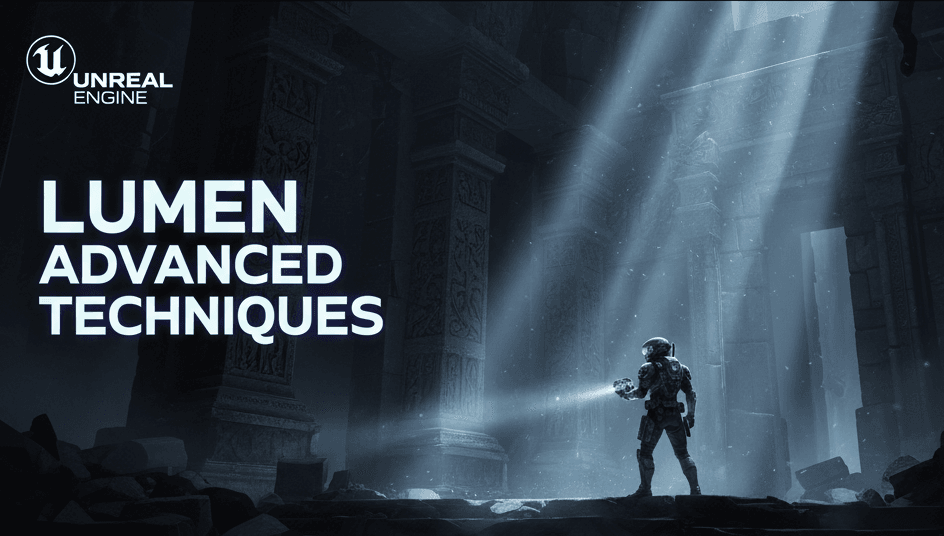
Here's the thing about game development - we've all been there. You spend hours perfecting your level design, only to realize that baking lightmaps is going to take another 3 hours. Then you change one light, and boom - another 3-hour wait. I remember my early days at KIXEYE, pulling all-nighters just waiting for lights to bake, thinking "there has to be a better way."
Well, turns out there is. Lumen lighting Unreal Engine 5 changed everything for me, and I'm about to show you why it's going to change everything for your projects too. This isn't just another lighting system - it's the difference between a photograph of a room and actually being in that room, watching light dance and react in real-time.
Table of Contents
- Wait, What Exactly Is This Lumen Thing Everyone's Talking About?
- The Game-Changing Terminology You Need to Know
- Here's Why Every Student Developer Should Care About This
- Software vs Hardware Ray Tracing: The Battle That Matters
- The Real-World Magic: Games That Blew My Mind With Lumen
- Let Me Walk You Through Your First Dynamic Scene
- Pro Tips I Wish Someone Had Told Me Earlier
- What This Actually Means for Your Projects
Wait, What Exactly Is This Lumen Thing Everyone's Talking About?
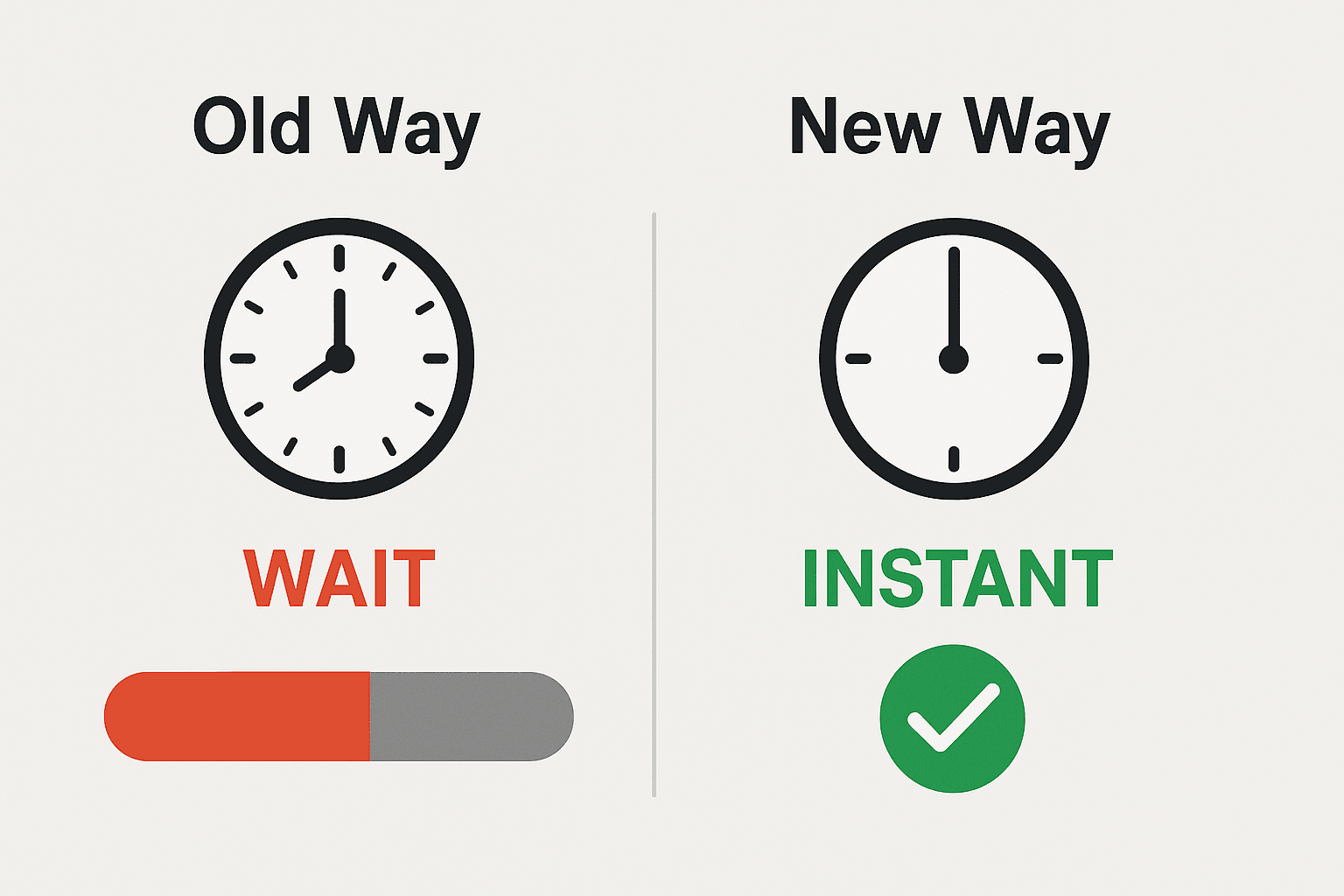
Let me paint you a picture. Traditional game lighting works like this: you set up your lights, hit "bake," and wait. Hours later, you get beautiful lighting that's completely static. Want to move that lamp? Start over.
Lumen is Unreal Engine 5's fully dynamic global illumination and reflections system. Its primary purpose is to solve the long-standing problem of slow, static, and inflexible lighting workflows in game development. Previously, achieving realistic lighting required a time-consuming process called "baking," where light and shadow information was pre-calculated and stored in textures. Lumen eliminates this entirely, allowing for real-time, dynamic indirect lighting that adapts instantly to any change in the scene, whether it's a moving light, a destructible wall, or a door opening.
This allows developers to create incredibly immersive and believable worlds where light behaves just as it does in reality. A simple analogy is the difference between a photograph of a room and actually being in the room; with baked lighting, you get a static snapshot, but with Lumen, you can walk around, open the blinds, and see the light change and react in real-time.
The Game-Changing Terminology You Need to Know
Been there - staring at documentation filled with jargon that might as well be in another language. Let me break down the key terms you'll actually use:
- Global Illumination (GI): This refers to the way light bounces off surfaces and illuminates other objects in the environment, creating soft, indirect lighting that makes scenes look more natural and realistic.
- Reflections: Lumen provides real-time reflections, allowing shiny or smooth surfaces to accurately mirror the surrounding world, including dynamic objects and lighting changes.
- Software Ray Tracing: This is Lumen's default mode, which uses Mesh Distance Fields to calculate lighting. It is designed to run on a wide range of hardware, including older graphics cards that do not have dedicated ray tracing cores.
- Hardware Ray Tracing: This mode uses dedicated ray tracing hardware (e.g., NVIDIA RTX GPUs) to achieve higher-quality lighting and reflections, especially for objects with fine details or complex shapes.
- Lumen Scene (Surface Cache): This is a simplified representation of the scene that Lumen creates and uses to calculate global illumination and reflections quickly, even for objects that are off-screen.
- Final Gather: This is the final stage of the Lumen rendering process, where the lighting information from the Lumen Scene is combined and refined to produce the high-quality, noise-free result seen on screen.
- Screen Space Global Illumination (SSGI): A less powerful, screen-space-only global illumination technique that Lumen can fall back to on lower-end hardware or when Lumen is disabled.
- Emissive Materials: These are materials that act as light sources themselves, casting light into the scene. Lumen allows these materials to contribute to the overall global illumination dynamically.
Here's Why Every Student Developer Should Care About This
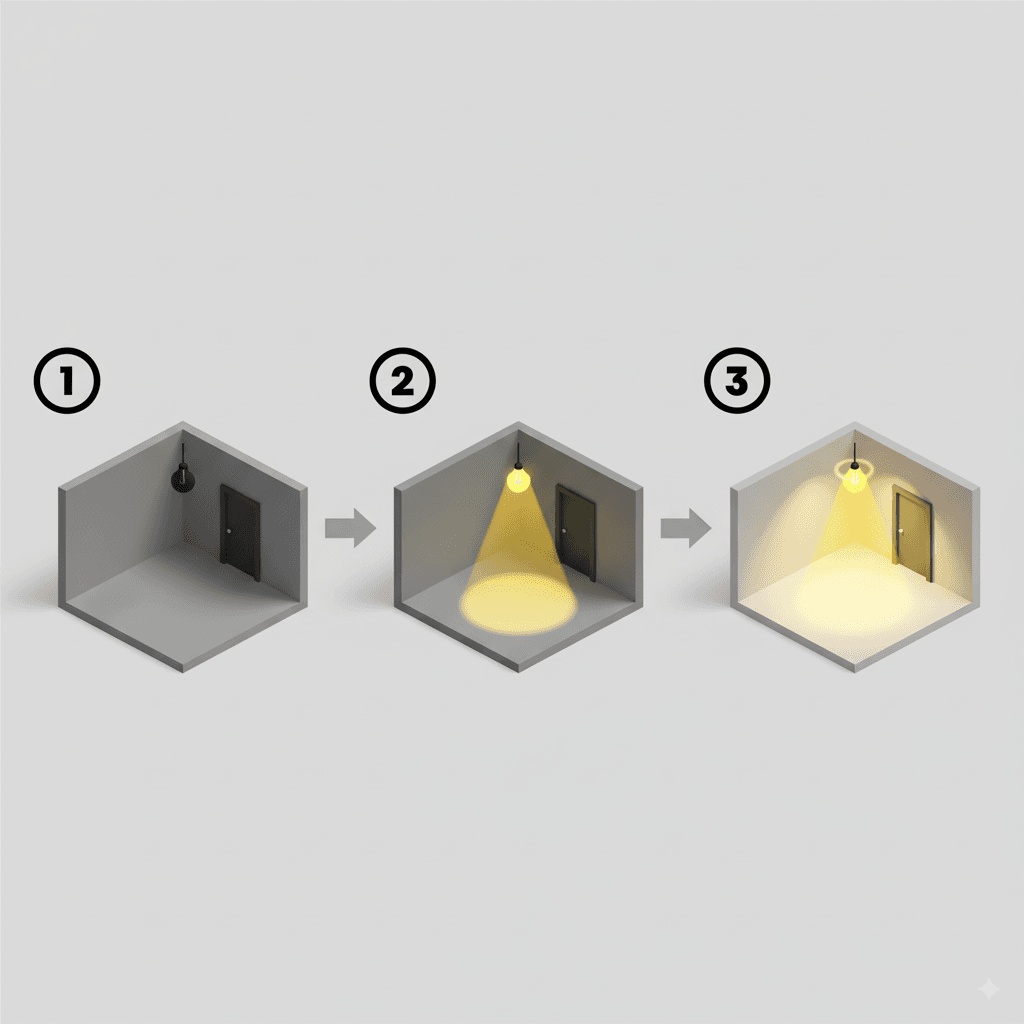
Actually, wait - let me tell you about the first time I experienced truly dynamic lighting in Unreal Engine 5. I was working on a prototype, moved a flashlight around a corner, and watched the shadows shift in real-time. No waiting, no re-baking, just instant feedback. That moment changed how I think about level design entirely.
Here's what Lumen actually gives you:
- Rapid Iteration: Artists and designers can move lights, change materials, and see the final lighting result instantly, dramatically speeding up the creative process.
- Dynamic Environments: Enables gameplay centered around dynamic lighting, such as destructible environments, player-controlled lights (flashlights), and time-of-day systems.
- Enhanced Realism: The realistic bounce lighting and reflections create a much greater sense of depth, immersion, and believability in the game world.
- Eliminates Baking: Removes the need for lightmap UVs and the lengthy process of baking lights, saving significant development time and reducing project complexity.
- Consistent Quality: Ensures that dynamic objects, like characters, are grounded in the scene with the same high-quality lighting as the static environment.
Software vs Hardware Ray Tracing: The Battle That Matters
You know what's funny? Everyone gets caught up in this debate, but here's what actually matters for your projects:
| Criteria | Approach A: Software Ray Tracing | Approach B: Hardware Ray Tracing |
|---|---|---|
| Best For | Projects targeting a wide range of hardware, including consoles and older PCs. Stylized games where perfect reflections are less critical. | High-end PCs and next-gen consoles. Projects aiming for maximum visual fidelity and realism, especially with complex, detailed environments. |
| Performance | Generally faster and more scalable. Less demanding on the GPU. | More performance-intensive. Requires a GPU with dedicated ray tracing cores (e.g., NVIDIA RTX 20-series or newer, AMD RX 6000-series or newer). |
| Complexity | Easier to set up as it's the default and requires no special hardware. | Requires enabling hardware ray tracing support in the project settings and works best with well-authored, high-quality meshes. |
| Code Example | r.Lumen.HardwareRayTracing=0 |
r.Lumen.HardwareRayTracing=1 |
Here's how you actually control these settings in your project:
; In ProjectSettings.ini or set via the editor UI
[/Script/Engine.RendererSettings]
r.DynamicGlobalIlluminationMethod=1 ; 1 for LumenFor reflections:
; In ProjectSettings.ini or set via the editor UI
[/Script/Engine.RendererSettings]
r.ReflectionMethod=2 ; 2 for LumenAnd to enable hardware ray tracing when you have the hardware:
; In ProjectSettings.ini or set via the editor UI
[/Script/Engine.RendererSettings]
r.Lumen.HardwareRayTracing=1 ; Set to 1 to enable Hardware Ray TracingVerified: Epic Games - Lumen Global Illumination and Reflections
Verified: Epic Games - Lumen Technical Details
The Real-World Magic: Games That Blew My Mind With Lumen
Let me tell you about three implementations that made me realize the true potential of Lumen performance optimization UE5:
The Last of Us Part I (Remake): Survival Horror Done Right
The Mechanic: The player uses a flashlight in dark, spore-filled basements.
The Implementation: Lumen's dynamic GI allows the player's flashlight to be the primary source of bounce lighting, realistically illuminating the tight, cluttered spaces. As the player moves the flashlight, shadows and light shift and bounce off every surface in real-time, creating a tense, claustrophobic atmosphere.
The Player Experience: The realistic lighting enhances the horror and tension. The darkness feels oppressive, and the small cone of light from the flashlight feels like the only source of safety.
Alan Wake 2: Light as a Weapon
The Mechanic: The player uses a flashlight and other light sources to burn away "darkness" from the environment and weaken enemies.
The Implementation: Lumen is used to create a world with deep, oppressive shadows. The player's flashlight dynamically cuts through this darkness, and the "burning" effect is a real-time change in geometry and material properties that Lumen's lighting immediately adapts to.
The Player Experience: This creates a core gameplay mechanic where light is a weapon. The visual contrast between the dark, dangerous areas and the safe, illuminated ones is stark and immediate, thanks to Lumen's real-time feedback.
Fortnite: Building Meets Dynamic Light
The Mechanic: A full day/night cycle where the sun moves across the sky, and buildings can be destroyed by players.
The Implementation: Lumen provides real-time global illumination for the entire island. As the sun sets, the lighting and shadows change dynamically without any pre-baked lighting. When a player destroys a wall, sunlight realistically floods into the building's interior.
The Player Experience: The world feels more alive and dynamic. The changing time of day provides a natural rhythm to the match, and the way light interacts with player-built and destroyed structures makes the environment feel more interactive and grounded.
Let Me Walk You Through Your First Dynamic Scene
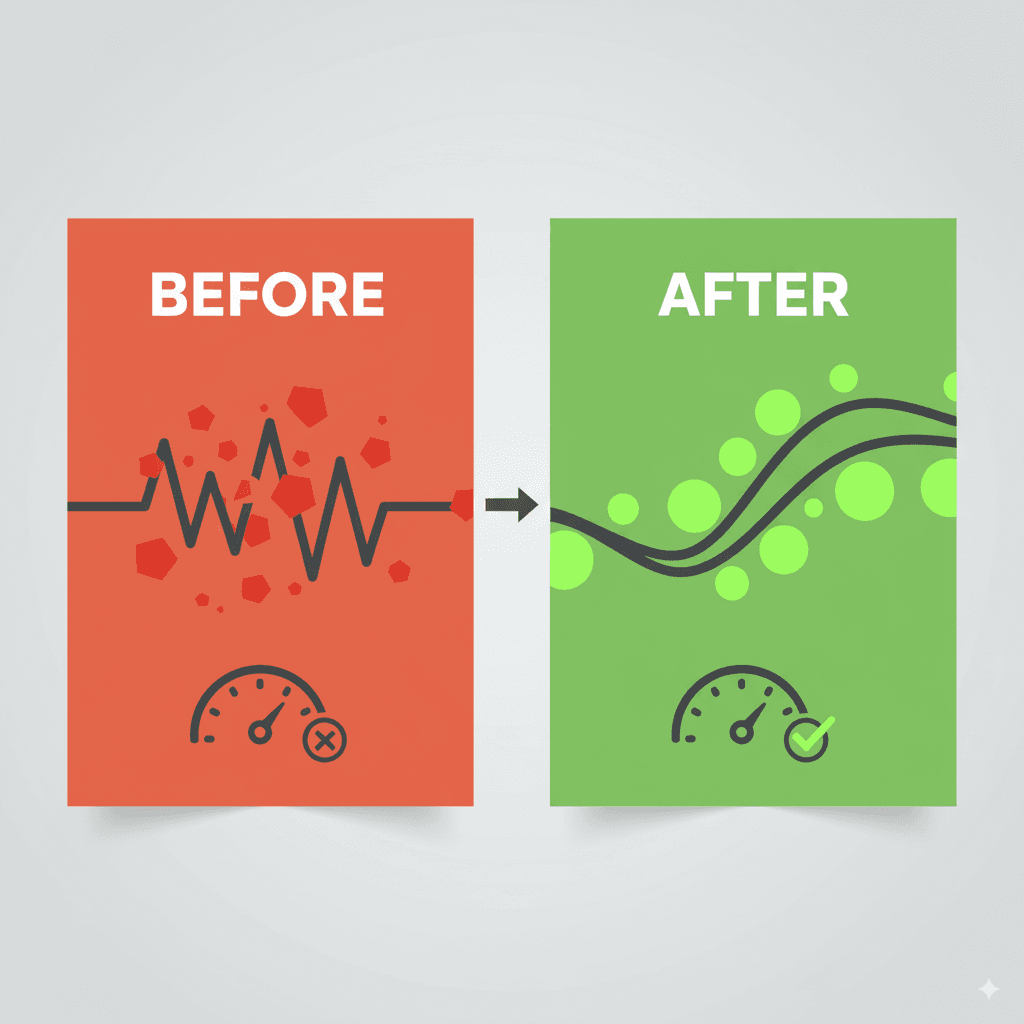
Alright, let's get our hands dirty. I'm going to show you exactly how I approach setting up three different scenarios that'll teach you everything you need to know about Unreal Engine 5 lighting workflow.
My Go-To Interior Setup: Single Light Magic
Scenario Goal: To create a simple room where a single, movable point light provides all the illumination, demonstrating Lumen's real-time global illumination.
Unreal Editor Setup:
- Create a new project with Lumen enabled by default.
- Create a simple room using basic cube meshes for the floor, ceiling, and walls.
- Ensure there is no Sky Light or Directional Light in the scene, or if there is, set its intensity to 0.
Step-by-Step Code Implementation:
- Add a Point Light: From the "Place Actors" panel, drag a
Point Lightinto the center of your room. - Make it Movable: In the Details panel for the Point Light, ensure its "Mobility" is set to
Movable. This is crucial for Lumen to treat it as a dynamic light source. - Adjust Intensity: Increase the light's
Intensityuntil it provides a good amount of illumination for the room. Notice how light bounces off the walls and ceiling to illuminate the entire space, even areas not in the light's direct path. - Enable Real-time Capture: To see the effect most clearly, especially with emissive materials, you may need to add a sky light and set it to real time capture.
// In the Details panel for the Sky Light
Light -> Real-Time Capture: Enabled- Move the Light: In the editor, grab the Point Light and move it around the room. Observe how the indirect lighting and shadows update instantly, with no performance hitch or need to rebake anything.
Creating Sci-Fi Glowing Objects That Actually Light Up
Scenario Goal: To create a glowing, futuristic object that dynamically illuminates its surroundings using an emissive material.
Unreal Editor Setup:
- Use the same interior scene from the previous setup.
- Place a sphere or cube mesh in the room to act as your sci-fi object.
Step-by-Step Code Implementation:
- Create a New Material: In the Content Browser, create a new
Material. - Set up the Emissive Channel: Open the material editor. Create a
Vector3constant (hold '3' and click) and connect it to theEmissive Colorinput. Pick a bright color like blue or green. To make it glow brightly, multiply this color by a scalar constant (hold '1' and click) with a value greater than 1 (e.g., 20). - Apply the Material: Save the material and apply it to the sci-fi object in your scene.
- Observe the GI: The object will now glow brightly and cast colored light onto the nearby walls and floor. This is Lumen calculating the global illumination from the emissive material in real-time.
- Animate the Glow: To make it dynamic, you can create a simple Blueprint to animate the emissive strength. Attach a Blueprint script to the object and use a
Timelinenode to vary the emissive multiplier value over time, which will cause the light from the object to pulse.
The Day-Night Cycle That Actually Works
Scenario Goal: To create a simple outdoor scene where the sun moves across the sky, and Lumen provides realistic lighting changes for a full day/night cycle.
Unreal Editor Setup:
- Create a new, empty level.
- Add a large plane for the ground.
- Add a
Directional Lightto act as the sun. - Add a
Sky Lightto capture the sky's color and contribute to the ambient light.
Step-by-Step Code Implementation:
- Set Lights to Movable: Select both the
Directional Lightand theSky Light. In their Details panels, set theirMobilitytoMovable. - Enable Real-Time Capture on Sky Light: For the
Sky Light, setLight -> Real-Time CapturetoEnabled. This ensures it updates its captured scene as the Directional Light changes. - Create a Level Blueprint: Open the Level Blueprint.
- Rotate the Sun: In the Event Graph, create a reference to your
Directional Light. From theEvent Ticknode, add anAdd Actor Local Rotationnode. Connect the Directional Light reference to theTarget. Set theDelta RotationY (Pitch) to a small value (e.g., 0.1) to make the sun rotate over time. - Play the Scene: Press Play. You will see the "sun" (Directional Light) slowly rotate. As it moves, Lumen will update the global illumination in real-time. Shadows will stretch, and the color of the ambient light will change, creating a natural-looking transition from day to evening.
Verified: Epic Games - Lumen Global Illumination and Reflections
Pro Tips I Wish Someone Had Told Me Earlier
Took me months to figure out these optimization tricks. Here's what I learned the hard way about difference between Lumen and Ray Tracing UE5:
- Optimize Mesh Distance Fields: Lumen's software ray tracing relies on Mesh Distance Fields. Ensure your meshes are clean and have a
Distance Field Resolution Scalethat is appropriate for their size and importance.
// In the Static Mesh Editor for a specific asset
LODs -> Build Settings -> Distance Field Resolution Scale: 2.0- Control Emissive Materials: Emissive materials can be a significant performance cost. Use the "Emissive Light Source" checkbox in the material properties to control which emissive materials contribute to the scene's lighting.
- Use Post Process Volumes: Fine-tune Lumen's quality and performance on a per-area basis using Post Process Volumes. This allows you to have higher quality settings for cinematic close-ups and more performant settings for fast-paced gameplay areas.
// In a Post Process Volume's Details panel
Global Illumination -> Method: Lumen
Global Illumination -> Quality: 2.0
Reflections -> Method: Lumen
Reflections -> Quality: 2.0- Lumen Scene Visualization: Use the editor's visualization modes to debug and optimize Lumen. The "Lumen Scene" view shows you the simplified version of your world that Lumen uses for its calculations, which is invaluable for troubleshooting.
Verified: Epic Games - Lumen Performance and Optimization
What This Actually Means for Your Projects
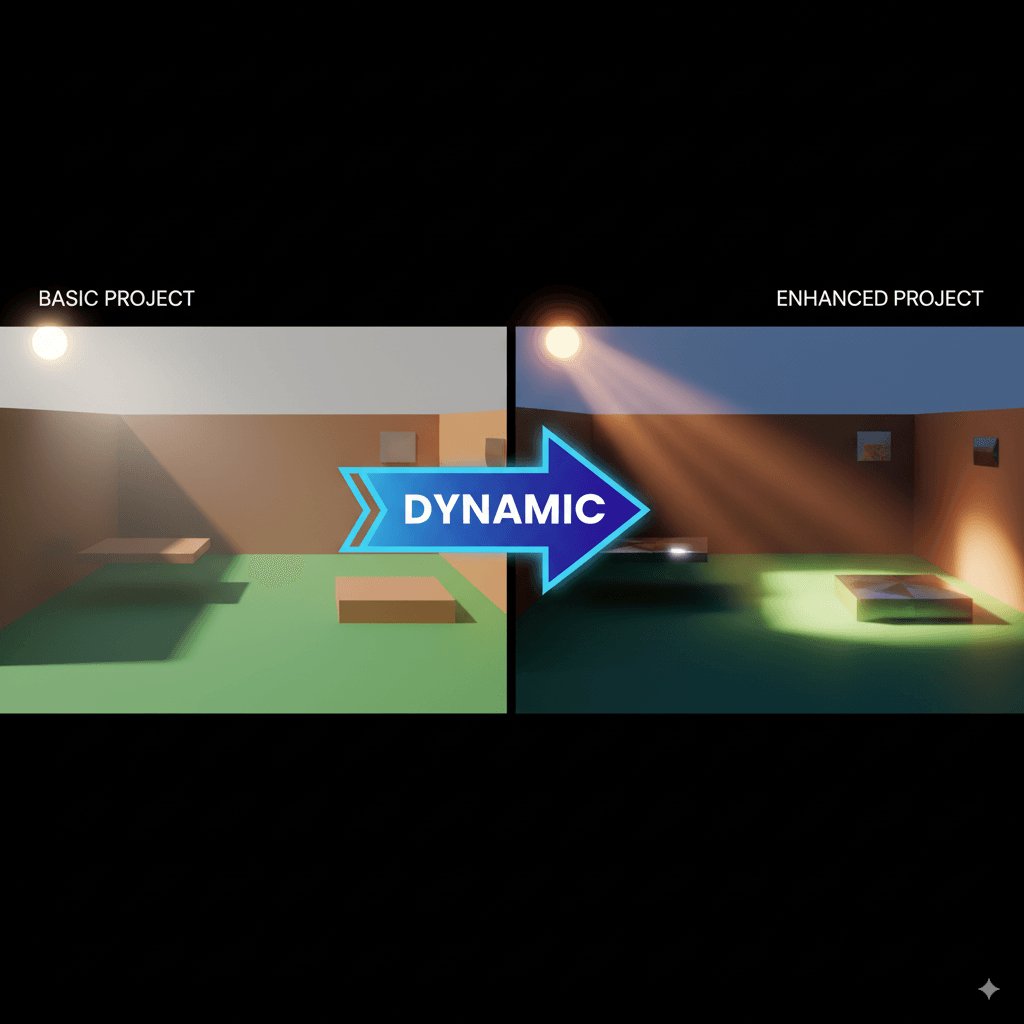
Here's what changed for me after mastering how to improve Lumen performance in UE5, and what you can expect:
- Rapid Iteration: You'll prototype lighting scenarios in minutes instead of hours. No more overnight baking sessions.
- Dynamic Gameplay Possibilities: Suddenly, gameplay mechanics centered around light become feasible. Think puzzles involving mirrors and light beams, or survival mechanics where managing light sources becomes critical.
- Enhanced Immersion: Your players will notice the difference immediately. Rooms feel more real, outdoor scenes have depth, and dynamic objects like characters feel grounded in your world.
- Simplified Pipeline: No more UV unwrapping for lightmaps, no more texture memory concerns for baked lighting, and no more complex light probe setups.
- Cross-Platform Consistency: With software ray tracing, you get consistent results across different hardware configurations.
The bottom line? Lumen reflections UE5 and the entire lighting system represents a fundamental shift in how we approach environmental storytelling and gameplay design. It's not just a technical upgrade - it's creative freedom.
Key Takeaways
- Lumen eliminates the traditional baking workflow, allowing for real-time dynamic global illumination and reflections that update instantly with any scene changes
- Software ray tracing works on most hardware and is perfect for stylized games, while hardware ray tracing delivers maximum visual fidelity on supported GPUs (RTX 20-series and newer)
- Global Illumination (GI) creates realistic bounce lighting while Lumen Scene (Surface Cache) enables fast calculations even for off-screen objects
- Emissive materials act as dynamic light sources, contributing to real-time global illumination without performance penalties when properly configured
- Post Process Volumes allow per-area quality control, enabling higher settings for cinematics and optimized performance for gameplay areas
- Mesh Distance Fields are crucial for software ray tracing performance - clean meshes with appropriate Distance Field Resolution Scale values are essential
- Real-world implementations in games like The Last of Us Part I, Alan Wake 2, and Fortnite demonstrate Lumen's capability for survival horror atmospherics, light-based combat mechanics, and destructible dynamic environments
- The technology enables rapid iteration for artists and designers, eliminating lengthy light baking times and allowing instant visual feedback for creative decisions
Common Questions
What is Lumen lighting and how does it work in Unreal Engine 5?
Lumen is UE5's fully dynamic global illumination and reflections system that eliminates traditional light baking. It uses either software ray tracing with Mesh Distance Fields or hardware ray tracing to calculate real-time indirect lighting, allowing light to bounce off surfaces and illuminate scenes naturally without pre-computation.
How do I enable Lumen in my UE5 project?
Set r.DynamicGlobalIlluminationMethod=1 in your project settings for global illumination and r.ReflectionMethod=2 for Lumen reflections. These are typically enabled by default in new UE5 projects.
When should I use software ray tracing versus hardware ray tracing with Lumen?
Use software ray tracing for projects targeting wide hardware compatibility, including older GPCs and consoles. Choose hardware ray tracing when you need maximum visual fidelity and are targeting high-end PCs with dedicated ray tracing cores (RTX 20-series or newer).
Why are my Lumen reflections not showing properly?
Ensure your lights are set to "Movable" mobility, enable real-time capture on Sky Lights, and check that your Post Process Volume has Lumen set as the reflection method. Also verify that reflective surfaces have appropriate material properties.
How can I optimize Lumen performance in my game?
Optimize Mesh Distance Fields by setting appropriate Distance Field Resolution Scale values, control which emissive materials contribute to lighting, use Post Process Volumes for per-area quality settings, and utilize Lumen Scene visualization to debug performance issues.
What's the difference between Lumen and traditional baked lighting?
Baked lighting pre-calculates light and shadow information into textures, creating static results that require re-baking after changes. Lumen calculates lighting in real-time, allowing dynamic lights, moving objects, and destructible environments without any baking process.
Can Lumen work with emissive materials as light sources?
Yes, emissive materials contribute to Lumen's global illumination dynamically. Use the "Emissive Light Source" checkbox in material properties to control which emissive materials affect scene lighting and manage performance costs.
How do I troubleshoot Lumen lighting issues in my scene?
Use the editor's "Lumen Scene" visualization mode to see the simplified representation Lumen uses for calculations. Check that objects have proper Mesh Distance Fields, lights are set to Movable, and Post Process Volume settings are configured correctly.
What hardware requirements do I need for Lumen?
Software ray tracing works on most modern GPUs including older cards without ray tracing cores. Hardware ray tracing requires dedicated ray tracing hardware like NVIDIA RTX 20-series or newer, or AMD RX 6000-series or newer GPUs.
How does Lumen handle dynamic environments and destructible objects?
Lumen automatically adapts to scene changes in real-time. When walls are destroyed, doors open, or objects move, the global illumination and reflections update instantly without requiring any re-computation or baking processes.
Can I use Lumen for both indoor and outdoor scenes effectively?
Yes, Lumen works well for both scenarios. Indoor scenes benefit from realistic bounce lighting and dynamic light sources, while outdoor scenes can utilize dynamic time-of-day systems with moving directional lights and real-time sky light capture.
What's the performance impact of using Lumen compared to baked lighting?
Lumen has higher runtime GPU costs but eliminates lengthy offline baking times. Software ray tracing is generally faster and more scalable, while hardware ray tracing provides better quality at higher performance costs on supported hardware.